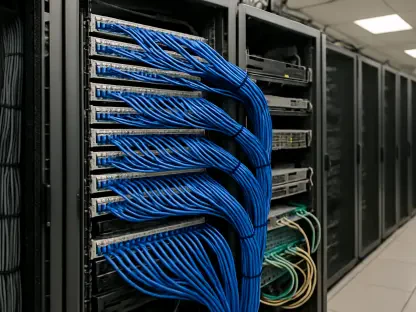Picture this: the hustle and bustle of modern life often eclipses the remarkable shift taking place in the way technology integrates with daily routines. Yet, it’s startling to consider that over 60% of global Internet traffic is already dependent on wireless technology. This newfound reliance has profoundly reshaped personal lifestyles and the global economy.
Navigating the Wireless Era
Understanding the nuances of wireless networking has become more crucial as the digital age accelerates. Wireless technology has rapidly grown, impacting numerous aspects of lives, particularly with the rise of remote work, the Internet of Things (IoT), and comprehensive digital transformation initiatives. These advancements reaffirm that connectivity is no longer a luxury but a fundamental aspect of modern infrastructure.
Prolific Advancements in Wireless Technology
The rollout of 5G technology is a prime example of a significant leap in wireless networking. Its promise of faster internet speeds and more stable connections is transforming how individuals and businesses operate. Similarly, the evolution of Wi-Fi standards has guided an era of heightened speed and reliability, making nearly instantaneous communication a reality.
The melding of artificial intelligence with network management has further streamlined the efficiency of wireless networks. AI-driven analytics continuously enhance how networks are structured, monitored, and optimized, ensuring that both current demands and future scalability are meticulously addressed.
Expert Insights in Wireless Technology
Leaders in wireless technology, like industry pioneer Dr. Samantha Roberts, have emphasized the profound impact of network advancements on sectors such as healthcare, education, and manufacturing. Research conducted by notable industry bodies underscores significant enhancements, like the quadrupling of data transfer rates and the reduction of latency, which collectively boost productivity and innovation.
Case studies reveal compelling applications; for instance, the healthcare sector has seen substantial improvements in patient monitoring via IoT devices, while the education system has embraced e-learning platforms that rely heavily on uninterrupted wireless connectivity.
Optimizing Wireless Network Potential
Maximizing the benefits derived from wireless networking requires strategic approaches tailored to specific industries. Ensuring robust network performance necessitates adopting cutting-edge hardware, like advanced routers capable of high data throughput. Enhanced cybersecurity measures are equally vital to protect against vulnerabilities that could compromise sensitive data.
Businesses and individuals must remain vigilant about compliance with evolving regulatory frameworks. Keeping abreast of policy changes ensures that networks not only perform optimally but also adhere to legal standards, thus preventing potential legal repercussions and ensuring data protection.
Forging Ahead
Wireless networking isn’t merely a tool for convenience; it has shaped the fabric of interconnected societies profoundly. Moving forward, staying abreast of technological advancements, fostering innovation, and implementing robust security measures will be essential in harnessing the full potential of wireless technology. The narrative surrounding wireless networks will continue to evolve, driven by emerging technologies and the ever-increasing demand for seamless connectivity. For all stakeholders, proactively embracing these changes has been the key to tapping into the transformative benefits that wireless networks promise.









